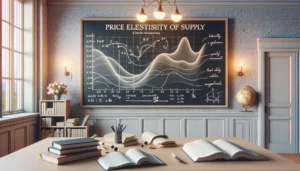Price ceilings are a pivotal market control tool, impacting both consumers and producers. Understanding their mechanics, implications, and real-world applications is essential for grasping modern economic policies.

✅ AI Essay Writer ✅ AI Detector ✅ Plagchecker ✅ Paraphraser
✅ Summarizer ✅ Citation Generator
Price ceilings represent a critical intersection between government regulation and market forces.
They occur when a governing body sets a maximum price for goods or services, often below the natural market equilibrium. Such controls aim to make essential items more affordable, but they also bring complex consequences, ranging from supply shortages to market inefficiencies. With significant relevance in areas like housing, healthcare, and essential commodities, understanding price ceilings is vital for comprehending broader economic dynamics.
Understanding the Mechanics of Price Ceilings
Price ceilings are not arbitrary figures; they are carefully calculated based on market conditions, aiming to balance affordability and supply. When regulators set a price ceiling, all sellers must comply, offering their products at or below this mandated maximum. Regular reviews and adjustments are necessary to keep these ceilings relevant to changing market conditions. For instance, in the event of a product shortage, regulators might reconsider the ceiling to avoid adverse impacts on quality and production.
The primary motive for implementing price ceilings is to protect consumers from excessive prices, especially for essential goods and services. During crises or market anomalies, these controls can prevent exploitative pricing and ensure broader access to necessities.
Implementing a price ceiling requires meticulous planning and ongoing surveillance.
Regulators must continuously monitor market trends, adjusting the ceiling to maintain its effectiveness and relevance. This dynamic approach helps mitigate potential negative impacts on both supply and quality.
The Impact of Price Ceilings
While the intent behind price ceilings is consumer protection, their effects can be more complex. In the short term, they may lower prices and boost demand. However, they can also lead to unintended consequences like reduced supply, lower quality, and market distortions.
Initially, price ceilings can make essential goods more accessible. However, over time, suppliers might reduce production or quality to offset revenue losses, leading to shortages and decreased product quality.
Economists often debate the efficiency of price ceilings, particularly their ability to protect vulnerable consumers. One significant concern is the creation of a ‘deadweight loss,’ where resource allocation becomes inefficient, disturbing market equilibrium and reducing overall economic welfare.
| Advantages of Price Ceilings | Disadvantages of Price Ceilings |
| Affordability Control 📉 Helps in keeping essential goods and services affordable for the general population, especially during economic hardships or market anomalies. | Supply Shortages 🚫 Can lead to a decrease in the supply of goods, as producers might cut back on production due to lower profit margins. |
| Prevention of Price Gouging 🛑 Prevents suppliers and producers from taking unfair advantage of consumers by charging excessively high prices, especially in times of crisis. | Quality Reduction 🔽 Producers may reduce the quality of goods or services to maintain profitability under price constraints. |
| Demand Stimulation 💸 By keeping prices low, price ceilings can stimulate demand and encourage consumer spending, potentially boosting the economy. | Secondary Price Increases 💰 Producers may increase the prices of other goods or services to compensate for revenue losses on price-controlled items. |
| Temporary Relief in Inflation 🆘 Effective in providing temporary relief from inflationary pressures caused by supply shortages or external factors. | Business Viability Challenges 📉 Prolonged or overly restrictive price ceilings can threaten the viability of businesses, potentially leading to closures and job losses. |
Real-World Applications of Price Ceilings
Rent controls, especially in high-demand urban areas, are a classic example of price ceilings. While intended to keep housing affordable, they can also lead to reduced housing supply and quality. The historical experience of New York City with rent controls illustrates these complex outcomes.
Governments frequently impose price ceilings on necessities like food and fuel. For example, Germany’s response to energy shortages following geopolitical crises showcases such practices. Similarly, price caps on medical products in the U.S. aim to curb excessive pricing.
Price ceilings also find application in services like ridesharing and professional salaries. For instance, regulations on rideshare pricing in India and salary caps in professional sports leagues demonstrate broader applications of this economic tool.
Final Thoughts
Price ceilings are a double-edged sword in economic policy. While they aim to make essential goods and services more accessible, they can lead to market inefficiencies and unintended consequences. Understanding their dynamics, impacts, and real-world applications is crucial for anyone interested in the complexities of economic regulation and market behavior.
FAQ
Follow us on Reddit for more insights and updates.





Comments (0)
Welcome to A*Help comments!
We’re all about debate and discussion at A*Help.
We value the diverse opinions of users, so you may find points of view that you don’t agree with. And that’s cool. However, there are certain things we’re not OK with: attempts to manipulate our data in any way, for example, or the posting of discriminative, offensive, hateful, or disparaging material.